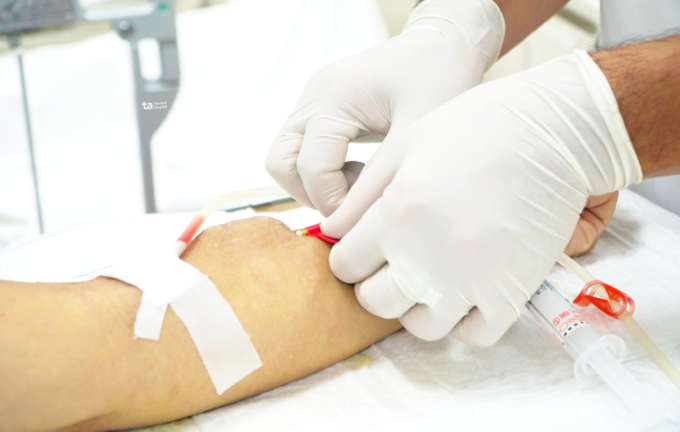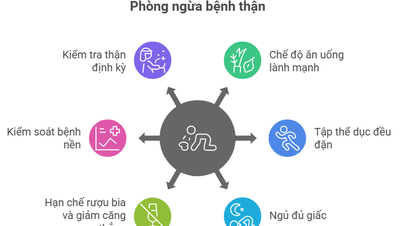Autologous arteriovenous fistulas, artificial vascular grafts, and central venous catheters are common vascular access routes for hemodialysis.
The vascular access pathway is the connection between the blood vessels and the hemodialysis machine. Dr. Ho Tan Thong, Department of Nephrology - Dialysis, Center for Urology - Nephrology - Andrology, Tam Anh General Hospital, Ho Chi Minh City, said this is a "lifeline" for hemodialysis patients because it is responsible for removing toxins and excess substances from the blood, preventing life-threatening complications.
Depending on the patient's health condition and the dialysis situation, the doctor will prescribe the appropriate intravenous access route for each patient, including:
Autologous arteriovenous fistula (AVF) : This is the ideal vascular access route for dialysis patients with chronic kidney disease who require long-term hemodialysis.
In this method, a vein is connected to an artery (in the arm), creating a pathway for blood flow from the artery to the vein and back to the heart. This increases blood flow through the vein, improves vein wall strength, makes dialysis needle placement easier, and allows for repeated procedures. Autologous arteriovenous bypass is the most durable access route to the dialysis bloodstream and has the lowest risk of infection and clot formation.

Nurses in the Nephrology and Dialysis Department at Tam Anh General Hospital in Ho Chi Minh City prepare blood lines for dialysis patients. Photo: Provided by the hospital.
Arteriovenous fistula (AVG) grafting : In cases where the patient's blood vessels are too small or AVF surgery has failed, arteriovenous fistula grafting using an artificial vascular graft will be the chosen method.
Doctors insert an artificial blood vessel under the skin of the patient's arm. One end of the tube connects to an artery, and the other to a vein. Patients can only begin dialysis through this bypass at least two weeks after surgery. Because it is an external implant, the artificial bypass carries a higher risk of infection and blood clot formation compared to an autologous bypass. This bypass can function for many years if the patient takes good care of it.
Central venous catheter : This method is indicated in situations where patients experience sudden renal failure and require emergency dialysis while their AVF or AVG is not yet stable enough for dialysis, or in patients with acute kidney injury requiring temporary hemodialysis.
The doctor inserts a catheter into a large vein in the patient's neck or thigh (this may be done under ultrasound guidance). The catheter is removed when the arteriovenous fistula is ready for dialysis.
Regardless of the vascular access route used for dialysis, patients need to maintain good hygiene, keeping their hands clean and dry, and washing their hands with soap or medical alcohol before touching anything. Avoid significant pressure or injury to the arm where the dialysis catheter is placed, such as lifting heavy objects, sleeping on it, collisions, or abrasions. Absolutely do not administer intravenous fluids, draw blood, or measure blood pressure; do not wear watches or bracelets on the arm where the catheter is placed.
Dr. Tan Thong advises dialysis patients to strictly follow their doctor's instructions for caring for the dialysis catheter. If any abnormalities are detected, patients should go to the hospital for timely treatment.
Thang Vu
Source link



![[Photo] Prime Minister Pham Minh Chinh attends the Conference on the Implementation of Tasks for 2026 of the Industry and Trade Sector](/_next/image?url=https%3A%2F%2Fvphoto.vietnam.vn%2Fthumb%2F1200x675%2Fvietnam%2Fresource%2FIMAGE%2F2025%2F12%2F19%2F1766159500458_ndo_br_shared31-jpg.webp&w=3840&q=75)










































































































Comment (0)